
April 2021 - Welcome
Sources
Search
Contact
Home
Welcome
Click on year to expand
2022
2021
2020
2019
2018
2017
2016
2015
Welcome
1851 Gold Controversery
Die Fingerprint Study
This month we are delving into the life of the third Mint Supervisor, Robert M. McAlpin(e). As with all Mint Supervisors in New Orleans this story has its twists and turns.
We are also getting back to the work of identifying die cracks and filling in the blanks for the VAMs we have.
![]()
![]() LVA Submissions
LVA Submissions
We have five coins to send to Leroy for analysis and that needs to get going again now that Leroy seems to be taking submissions.
![]()
![]() VSS Submissions
VSS Submissions
We have twenty coins to send to JB for VAM analysis and photography, but like everyone else the world seems to be in slow motion right now.
New Orleans Supervisors
1837 - 1839 David M. Bradford
1839 - 1850 Joseph M. Kennedy
1850 - 1852 Robert M. McAlpin
![]()
One of the interesting things into the research of each of the Superintendent of the New Orleans Mint is that the less flamboyant they are the more difficult they are to investigate. The first two Superintendents, David M. Bradford and Joseph M. Kennedy, were easily located and their stories so outlandish that there were newspaper articles, books, and plenty of Mint communications to build a story.
But with the third superintendent, Robert M. McAlpin, just the opposite is true. It appears that Robert M. McAlpin (sometimes spelled McAlpine) was a transitional superintendent of the branch mint who had little impact other than as a placeholder waiting on a more permanent manager. He only served from 1850 until 1853 when Charles Bienvenu took charge.
In the 1850 Federal Census a Robert M. McAlpin of New Orleans is listed as a thirty year old merchant from Ohio. In the Senate Executive Journal of December 16, 1850 it is shown that a Robert M. McAlpin was appointed by President Milliard Fillmore in a recess appointment. Also listed in that appointment are William DeBuys as Treasurer of the Mint and Augustus Devall as the Chief Coiner. The Senate later endorsed these nominations on January 23, 1851. It seems to us that this Robert M. McAlpin is NOT the most likely candidate for the post.
At the time of these appointments, Robert Maskell Patterson was the Director of the Mint and we can assume he endorsed these nominations. Patterson was appointed by President Andrew Jackson in 1835, and served for sixteen years. His tenure ended in 1851, but since he died in 1854 at the age of sixty-seven we might assume he left for reasons of health rather than politics. Patterson also had the inside track as the Director of the Mint since his father, Robert Patterson, had served as the Director from 1805 to 1824 and was a personal acquaintance of Thomas Jefferson. But Robert M. Patterson, like his father, seems to have been a highly intelligent person and the youngest ever elected to the American Philosophical Society.
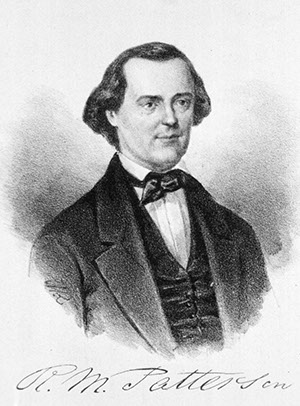
But back to Robert M. McAlpin and his tenure at the New Orleans Mint. One might imagine that the name Robert McAlpin would not be that common, but that is definitely wrong. There were several Robert McAlpins in the New Orleans and nearby parishes at the time, and many if not most migrated there from Georgia. But records being what they were, middle names were often omitted from articles and correspondence, and census takers were not always accurate. So finding the correct Robert McAlpin with perfect certainty is almost impossible at this point.
But we believe the most likely candidate is listed in the 1850 Federal Census as Robert C. McAlpin, a lawyer who was born in Georgia. In 1850 he was 49 years old (but perhaps as young as 44) and had the right profession and age to fit. He is listed with his wife, six children, and several older Irish relatives in the New Orleans Municipality.
Since no pictures survive and there are no further sources, this Supervisor's exact identification may remain a mystery. He was there only two years and little correspondence survives.
![]()
One of the few hints of the work of Robert McAlpin during his tenure as the Mint Supervisor comes in an exchange between the Philadelphia and New Orleans Mints.
First, in the Scientific American in 1850 it was reported that the New Orleans Treasurer, Mr. Macmurdo, had resigned and thus the Mint had to suspend operations. Mr. Macmurdo resigned over a salary dispute basically saying the salary was not worth the risk involved with the job.
![]()
The first letter located was from M. F. Bonzano, the Refiner and Melter. Bonzano was a competent employee who worked tirelessly at the Mint before and after the Civil War in various capacities. Apparently there were frequent complaints from depositors of the gold deposits being returned "light" or short of the original deposit.
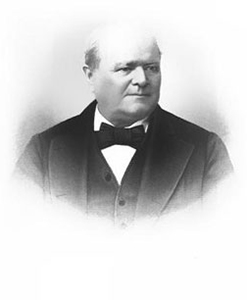
In a letter dated November 29, 1851 Bonzano carefully explains in an eight page letter the process and care used by his department so as to alleviate any concerns. Apparently the issue resulted from adulterated or poorly refined gold being deposited. Often the gold dust contained silver, dirt, brass, and other impurities that when refined at the Mint were excluded from the final product.
Bonzano goes on to explain every step of the process and the care taken whenever there is an issue.
![]()
Our second letter is dated just a week later on December 6, 1851 from William DeBuys, the New Orleans Treasurer to R. M. McAlpin Esq. This is a strong hint that McAlpin was an attorney since the abbreviation "Esq." often goes with attorneys.
DeBuys references the same incident and concludes that the problem is often seen with gold from California. He states that he has examined the processes and concludes that there is no issue with the Mint, but that the fault lies with the depositors.
![]()
On another strange note, William DeBuys was appointed Treasurer at the same time that McAlpin was appointed Superintendent. William DeBuys was a prominent politician and served on the State and Federal level in various posts. He served as the Louisiana State Treasurer and a candidate for governor in 1844. DeBuys was injured in a sword duel on March 24, 1844.
In the Norwalk, Ohio newspaper The Experiment, it was reported:
Fatal Duel - On Sunday morning, 24th March, a duel took place at New Orleans between William Debuys, the state treasurer, and Mr. Richard Richardson. The parties met at the New Orleans Ball room at 12 o'clock, and fought with sharpened foils. Mr. Richardson was severely wounded in the shoulder, and Debuys was run through the lower part of his body; but faint hopes were entertained of his recovery.
The article sounds as if Debuys died from wounds, but census and other records would indicate otherwise. In 1845 he had a failed run for Governor of Louisiana, and he volunteered for service in the Mexican-American War in 1846. So perhaps it was Richardson who died and not Debuys, or neither.
![]()
Expect the unexpected when researching New Orleans Mint employees!
Not That Robert McAlpin
Along the road to discovery we first thought that the third Supervisor of the New Orleans Mint might be the infamous Robert McAlpin who many thought was the person that Harriet Beecher Stowe modeled the Simon Legree character from in Uncle Tom’s Cabin.
But that Robert McAlpin was slightly older and did not live in New Orleans. He also was a bachelor, so the third mint supervisor could not have been a match either as a descendant or the character in the book. There is nothing in his story that seems to fit as a Mint Supervisor.
Had this been true it would have fallen right in line with the unusual stories and histories of the New Orleans Mint Supervisors, and until we know more the admonition of “You never know!” still applies.
![]()
But this does lead to other discussions about the Simon Legree character and our Robert McAlpin. Legree was supposedly an evil man who was born in the North and moved south.
The Robert McAlpin of Uncle Tom's Cabin fame was born in Georgia, as was Robert C. McAlpin. This Robert McAlpin lived in Natchitoches, Louisiana and that is where it probably ends in a non-match. Natchitoches is about 250 miles from New Orleans and in 1850 that would have been a great distance.
![]()
After many months it is time to get back to the study of die cracks and breaks in various VAMs. This has proven to be a really helpful tool in identification of VAMs and in particular finding inconsistencies that lead to new VAMs.
To see our overall progress with this study CLICK HERE.
![]()
VAM 14 - Doubled First 8, Die Gouge DO
Our collection contains five examples of VAM 14, but only one of those is in MS condition and good enough to study die cracks, certificate 33582008.
Fortunately VAM 14 is so distinctive that the die gouge on the reverse distinguishes it from others. The one example of VAM 14 in MS state in our collection exhibits no die cracks or die breaks.
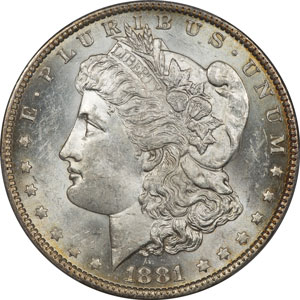
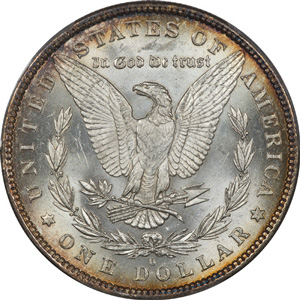
The obverse die lacks the doubled first 8 of VAM 42. See the matrix page.
![]()
VAM 42 - Doubled Left 8, Die Gouge DO
Our collection contains only two examples of VAM 42, both in AU 58 condition. The best one for study is certificate 33102639, but neither coin exhibits any die cracks.
Like VAM 14 the reverse die gouge is so distinctive that the die gouge narrows the focus to only VAMs 14 and 42. VAM 42 is distinguished from VAM 14 by a doubling of the first 8 in the date.
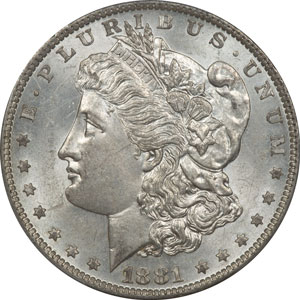
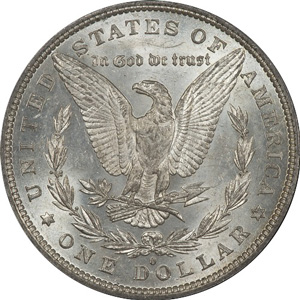
![]()
VAM 22 - Doubled 1--1, O Tilted Left
Our collection contains Thirty-three examples of VAM 22, so this VAM is by no means rare. It is readily available in all grades and our inventory ranges from AU 55 to MS65PL.
The highest graded one is certificate 25699416, but neither it nor any other examples show any die cracks.
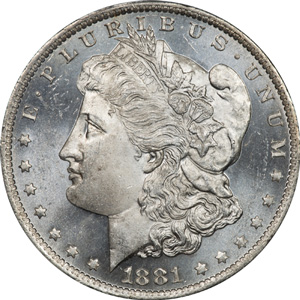
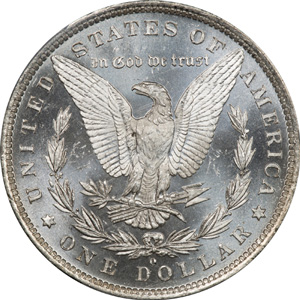
The obverse die is shared with VAM 49, and the reverse die with five others.
![]()
Getting Started
Collecting The 1881-O
The 1881-O VAMs




















